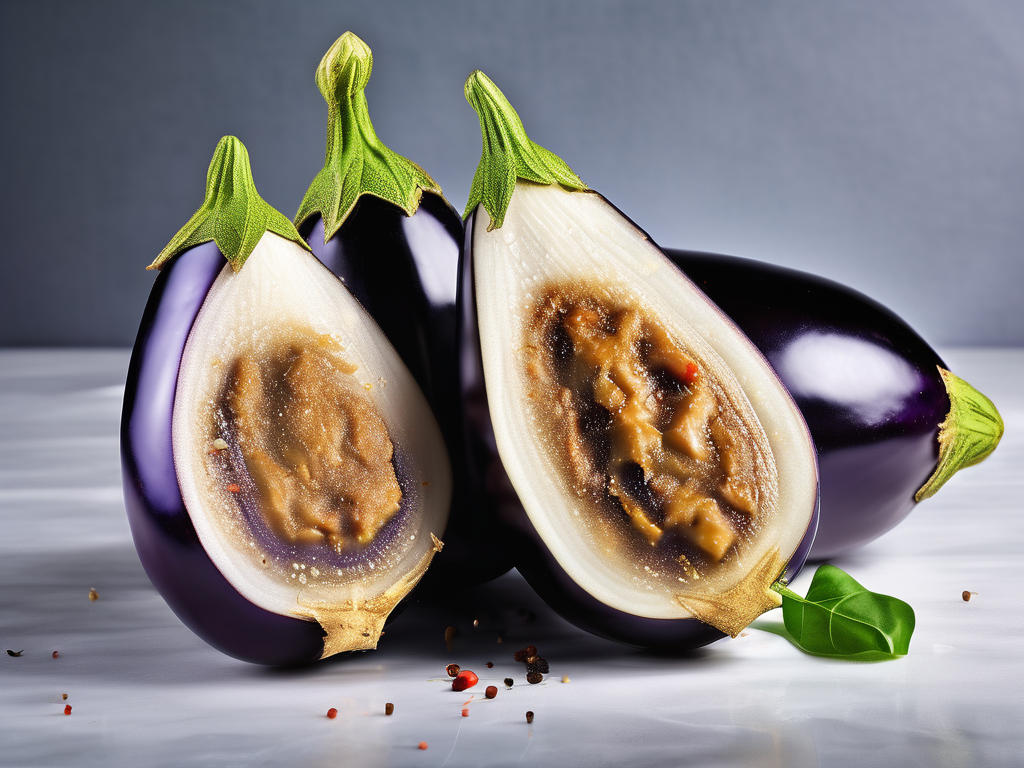
The Ultimate Guide to Storing Eggplant to Prevent Mold and Rot
Get Your Free Food Safety Cheat Sheet
30 most common foods with instant answers. Print it and stick it on your fridge—completely free!
The Ultimate Guide to Storing Eggplant to Prevent Mold and Rot
Eggplant, also known as aubergine in some parts of the world, is a versatile and nutritious vegetable that can be used in a variety of dishes. However, improper storage of eggplant can lead to mold and rot, rendering it inedible. In this comprehensive guide, we will explore the best practices for storing eggplant to ensure it stays fresh and delicious for longer. (Eggplant)
Understanding the Importance of Proper Eggplant Storage
Proper storage of eggplant is essential to maintain its freshness, flavor, and nutritional value. When stored incorrectly, eggplant can quickly deteriorate, leading to mold growth and rot. By following the tips outlined in this guide, you can extend the shelf life of your eggplant and reduce food waste.
Factors That Contribute to Eggplant Spoilage
Several factors can contribute to the spoilage of eggplant, including:
- Moisture: Excess moisture can promote mold growth on the surface of the eggplant.
- Temperature: Eggplant is sensitive to temperature fluctuations and should be stored at the ideal temperature to prevent rot.
- Ethylene gas: Eggplants are sensitive to ethylene gas, which is produced by certain fruits and vegetables and can accelerate the ripening process.
Best Practices for Storing Eggplant
To prevent mold and rot, follow these best practices for storing eggplant:
1. Choose Fresh Eggplant
- Select eggplants that are firm, smooth, and free from blemishes or soft spots.
- Avoid eggplants with wrinkled skin or dull color, as these are signs of aging.
2. Store at the Right Temperature
- Keep eggplant in a cool, dry place away from direct sunlight.
- Ideally, store eggplant in the refrigerator at temperatures between 45-50°F (7-10°C).
3. Properly Wrap and Seal Eggplant
- Wrap individual eggplants in paper towels to absorb excess moisture.
- Place wrapped eggplants in a perforated plastic bag or airtight container to maintain freshness.
4. Avoid Exposure to Ethylene Gas
- Keep eggplant away from ethylene-producing fruits such as bananas, apples, and tomatoes.
- Store eggplant separately to prevent premature ripening.
5. Check and Use Eggplant Promptly
- Regularly inspect stored eggplants for any signs of mold or softening.
- Use eggplant within 3-5 days of purchase for the best flavor and texture.
Additional Tips for Long-Term Eggplant Storage
If you have an abundance of eggplant and want to store them for an extended period, consider these tips:
- Freezing: Slice or cube the eggplant, blanch them, and freeze in airtight containers for up to 6-8 months.
- Pickling: Preserve eggplant by pickling them in vinegar, salt, and spices for long-term storage.
Conclusion
By following the proper storage guidelines outlined in this guide, you can prevent mold and rot in your eggplant and enjoy fresh, flavorful dishes for longer. Remember to choose fresh eggplant, store them at the right temperature, wrap them properly, avoid exposure to ethylene gas, and use them promptly. With these tips, you can extend the shelf life of your eggplant and reduce food waste in your kitchen. (Eggplant)
Related Posts
Here are some other articles you might find helpful:
Authoritative Food Safety References
These agencies and university labs inform every tip and health precaution we publish.
USDA FoodKeeper – Cold Storage Guidelines
Official refrigerator, freezer, and pantry timelines maintained by the U.S. Department of Agriculture.
Visit USDA FoodKeeperFDA Produce Safety Rule & Grower Guidance
Field-to-fridge handling practices that prevent contamination of fruits, vegetables, and leafy greens.
Visit FDA Produce SafetyCDC Foodborne Illness Prevention Hub
Surveillance-backed guidance on pathogens, symptoms, and steps to reduce foodborne illness risk.
Visit CDC Food SafetyUC Davis Postharvest Technology Center
University research detailing optimal storage atmospheres for produce after harvest.
Visit UC Davis PostharvestPenn State Extension – Home Food Preservation & Safety
Peer-reviewed extension bulletins on safe canning, chilling, and reheating practices.
Visit Penn State ExtensionGet Your Free Food Safety Cheat Sheet
30 most common foods with instant answers. Print it and stick it on your fridge—completely free! Want more? Upgrade to the complete guide with 70+ foods.
Scan your food directly and get instant safety info using our AI-powered camera feature.